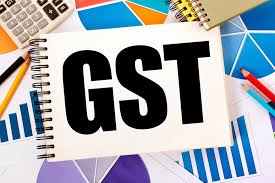GST revenue growth robust in Punjab, surpasses pre-Covid levels
In a sign of sustained improvement in business sentiment, Punjab has reported a robust growth in the goods and services tax (GST) collection in the first half of financial year 2021-22 with a hefty increase in revenue from the pre-Covid levels.
The GST revenue, including state goods and services tax (SGST) and integrated goods and services tax (IGST) in the first six months (April to September) of the current fiscal stood at ₹7,851 crore, which is 67.55% more than in the corresponding period a year ago, and 54% higher than the mop-up in the pre-pandemic year of 2019-20, according to the indirect tax data compiled by the state taxation department.
The state’s GST collection was ₹5,097 crore in the April-September period of 2019-20, but it dropped to ₹4,685 crore in the same period of 2020-21 after coronavirus broke out, bringing business activities to a halt and battering the economy.
The jump in revenue in the current fiscal indicates a sustained recovery after strong economic rebound after the second wave of the Covid-19 pandemic with pent-up demand driving sales across sectors. The taxation department expects the positive trend to continue in the second half of the current fiscal as well.
Increased demand, anti-evasion measures
Taxation commissioner Nilkanth S Avhad said the GST collection in the first six months of 2021-22 was indicative of growth in consumption and better enforcement and increased compliance. “Anti-evasion activities, including increased supervision, data analysis, plugging loopholes and on-road detention, have also contributed, but there is a lot more that needs to be done,” he said. The department officials have detained 3,000 vehicles and imposed penalty of ₹76 crore in the past six months for various violations.
Despite the rebound, the GST revenue continues to be way below the protected revenue of ₹2,739 crore per month, putting it among the states with the highest revenue shortfall and dependent on compensation from the Centre for almost half of its indirect tax revenue.
At the time of switching to the GST, the Centre had guaranteed 14% year-on-year growth over the 2015-16-base and the state was to be compensated for any shortfall. The indirect tax regime was implemented from July 1, 2017, and the compensation is scheduled to end on June 30, 2022, unless it is extended by the GST Council. The state posted a 25% year-on-year increase in the GST collection in September, taking it to ₹1,316 crore in September 2021 from ₹1,055 crore in the corresponding month of previous fiscal.
Rising fuel prices swell VAT kitty
The value-added tax (VAT) mop-up from petroleum products has also seen a 66% year-on-year surge in the April-September period, increasing to ₹4,024 crore this year from ₹2,426 crore in the corresponding months of 2020-21.
The jump is primarily on account of rising fuel prices as 90% of VAT revenue in government kitty comes from diesel and petrol, and the remaining 10% is from aviation turbine fuel, and liquor. With fuel prices at unprecedented levels, ₹627.43 crore were collected from VAT in September 2021 as against ₹444.70 crore in the same month last year, showing a 41% increase. In September 2019, the VAT revenue was half of last month’s collection at ₹317 crore. At ₹2,907 crore, the excise collection has also reported an increase of 18% in first six months this year.
Download our App to get knowledge updates: https://play.google.com/store/apps/details?id=com.app.gstmitra



Comments
Post a Comment